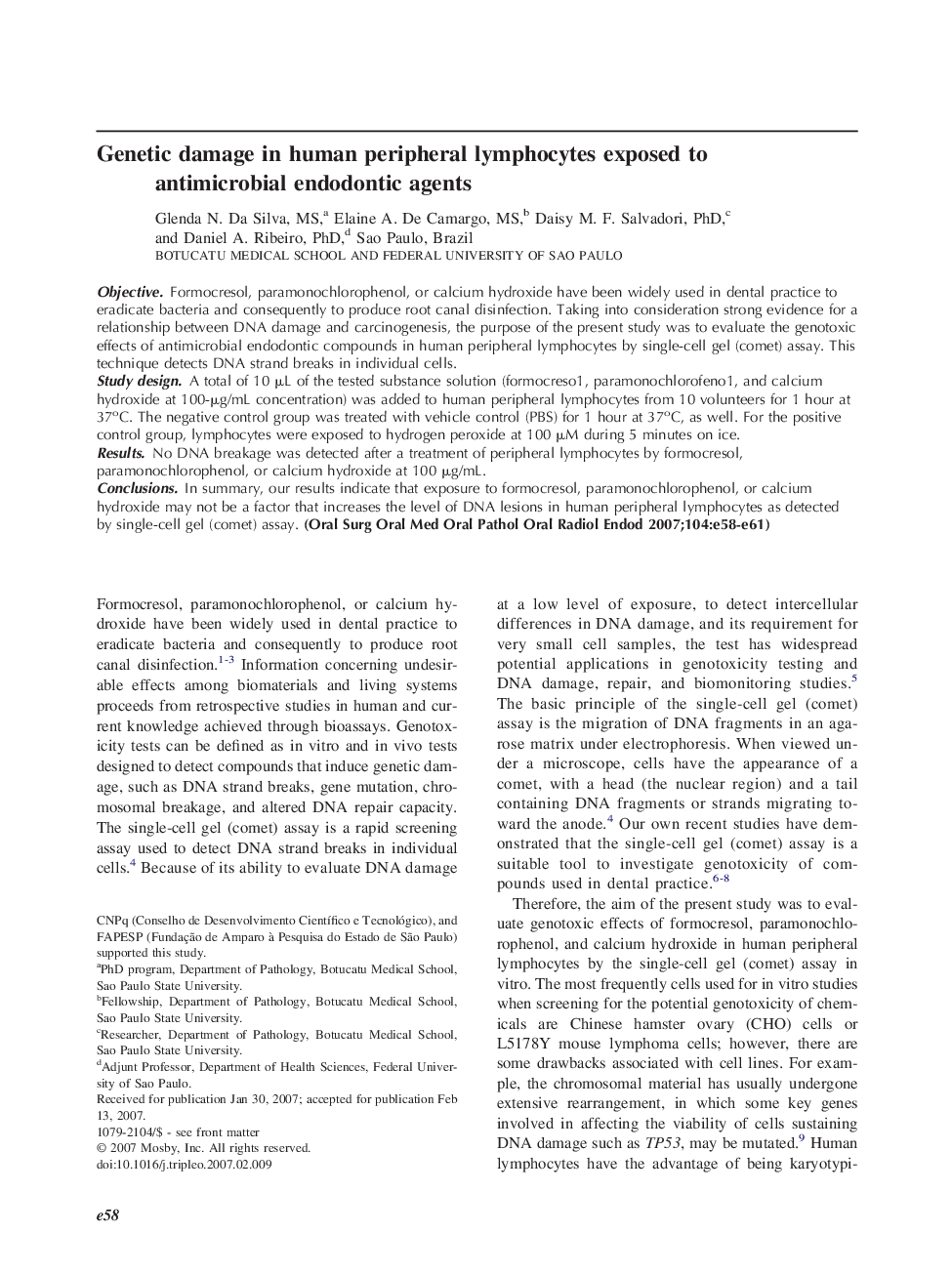| Article ID | Journal | Published Year | Pages | File Type |
|---|---|---|---|---|
| 3169139 | Oral Surgery, Oral Medicine, Oral Pathology, Oral Radiology, and Endodontology | 2007 | 4 Pages |
ObjectiveFormocresol, paramonochlorophenol, or calcium hydroxide have been widely used in dental practice to eradicate bacteria and consequently to produce root canal disinfection. Taking into consideration strong evidence for a relationship between DNA damage and carcinogenesis, the purpose of the present study was to evaluate the genotoxic effects of antimicrobial endodontic compounds in human peripheral lymphocytes by single-cell gel (comet) assay. This technique detects DNA strand breaks in individual cells.Study designA total of 10 μL of the tested substance solution (formocreso1, paramonochlorofeno1, and calcium hydroxide at 100-μg/mL concentration) was added to human peripheral lymphocytes from 10 volunteers for 1 hour at 37°C. The negative control group was treated with vehicle control (PBS) for 1 hour at 37°C, as well. For the positive control group, lymphocytes were exposed to hydrogen peroxide at 100 μM during 5 minutes on ice.ResultsNo DNA breakage was detected after a treatment of peripheral lymphocytes by formocresol, paramonochlorophenol, or calcium hydroxide at 100 μg/mL.ConclusionsIn summary, our results indicate that exposure to formocresol, paramonochlorophenol, or calcium hydroxide may not be a factor that increases the level of DNA lesions in human peripheral lymphocytes as detected by single-cell gel (comet) assay.
